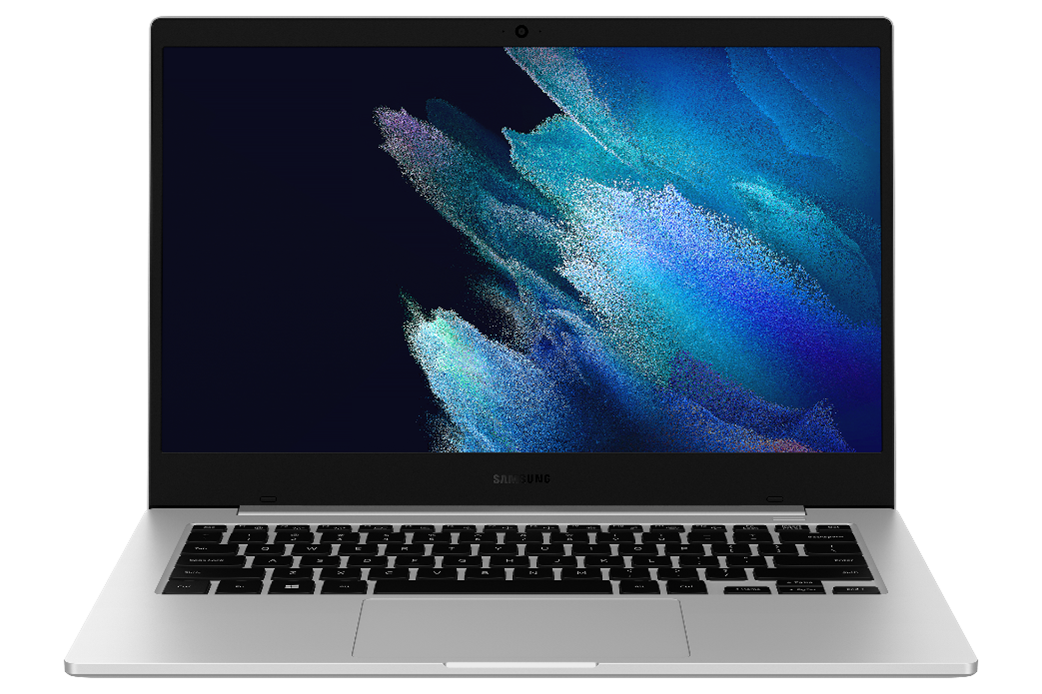AT&T Samsung Galaxy Book Go 5G with faster 8cx Snapdragon now available for $800
With a bump in CPU to the more powerful Snapdragon 8cx Gen 2 and added 5G, the first budget 5G PC is here.

What you need to know
- AT&T is now selling the 5G-enabled Samsung Galaxy Book Go.
- It doubles RAM and storage while also adding a much faster Snapdragon 8cx Gen 2 CPU.
- It costs just $800, which easily makes it the most affordable 5G Windows PC.
Hot on the heels of our review of the Samsung Galaxy Book Go comes to the 5G version of the budget PC. While it is still listed as "coming soon" on Samsung's site, major US carrier AT&T is now selling the Qualcomm-based laptop for $799 direct.
Interestingly, there are a few notable changes from the $300 version besides 4G LTE and support for 5G Sub-6 bands.
The bump to 8GB of LPDDR4x RAM from just 4GB is expected, but still nice to see, but the more significant news is the processor. Instead of the slower Qualcomm Snapdragon 7c Gen 2, this version gets the much more performant Snapdragon 8cx Gen 2 — the same processor found in the new HP Elite Folio and similar to the Microsoft Surface Pro X.
Internal storage is also bumped from 128GB eUFS to 256GB.
| Category | Galaxy Book Go/5G |
|---|---|
| Operating system | Windows 10 |
| Display | 14-inch TFT Full HD (1920x1080) non-touch |
| Processor | Qualcomm Snapdragon 8cx Gen 2 |
| Graphics | Qualcomm Adreno |
| Memory | 8GB LPDDR4x |
| Storage | 256GB eUFS |
| Expandable storage | microSD |
| Camera | 720p HD Digital microphone |
| Connectivity | Wi-Fi 5 AC 3G, 4G LTE, 5G and 5G Plus |
| Bands | 4G: Bands 1, 2, 3, 4, 5, 7, 12, 14, 20, 29, 46 and 66 HSPA+ with enhanced backhaul 3G (UMTS): 850/1700/1900/2100MHz |
| Ports | 2x USB Type-C 1x USB 2.0 Headphone/mic Nano Security slot nano SIM |
| Audio | 2x Dolby Atmos |
| Battery | 42.3WHr |
| Power | 25W USB Type-C Fast Charger |
| Dimensions | 323.9mm x 224.8mm x 14.9mm |
| Weight | 3.04 pounds (1.38kg) |
| Colors | Silver |
While a $500 bump in price is quite a lot, this version of the Galaxy Book Go effectively doubles performance across the board — RAM, storage, CPU — and adds 4G and 5G connectivity, which makes the pricing seem appropriate.
For the display, Samsung lists it as LCD instead of TFT, which may be another upgrade over the non-5G model.
The most affordable 5G PC by a mile
There are not many 5G Windows PCs floating around, but the few that exist tend to be very expensive. The Lenovo ThinkPad X1 Titanium Yoga tacks on $462 just for the 5G modem bringing the price to over $2,000. The same goes for the Dell Latitude 9510 2-in-1 and HP Elite Dragonfly G2. You can see more in our best 5G laptops guide.
All the latest news, reviews, and guides for Windows and Xbox diehards.
The very first 5G Windows laptop was also ARM-based. The Lenovo Flex 5G arrived back on July 20, 2020, and it was mainly exclusive to Verizon as it is the only laptop to support the high-speed mmWave technology in addition to standard 5G Sub-6. It's still available for around $1,370.
It's unclear if this AT&T version of the Galaxy Book Go is carrier-unlocked. Still, so far, we have never encountered an Always-Connected Windows laptop that is tied to a carrier, making it very unlikely that it is locked.
In our full review of the Galaxy Book Go, we noted that the laptop is thinner, lighter, quieter, and smaller than any other budget PC around while delivering marginally better performance. The new 5G version ups the ante but keeps the most affordable moniker by a mile. Whether people buy it now remains to be seen, but at least it is now an option for those who need it.
Thanks, Annullator, for the tip!

Daniel Rubino is the Editor-in-chief of Windows Central. He is also the head reviewer, podcast co-host, and analyst. He has been covering Microsoft since 2007 when this site was called WMExperts (and later Windows Phone Central). His interests include Windows, laptops, next-gen computing, and wearable tech. He has reviewed laptops for over 10 years and is particularly fond of 2-in-1 convertibles, Arm64 processors, new form factors, and thin-and-light PCs. Before all this tech stuff, he worked on a Ph.D. in linguistics, performed polysomnographs in NYC, and was a motion-picture operator for 17 years.


